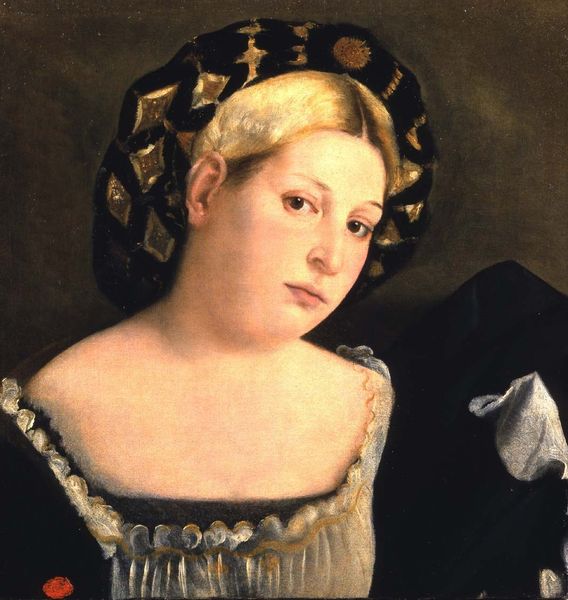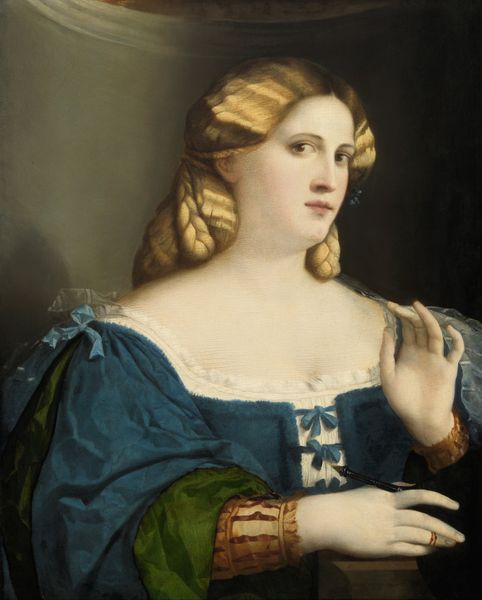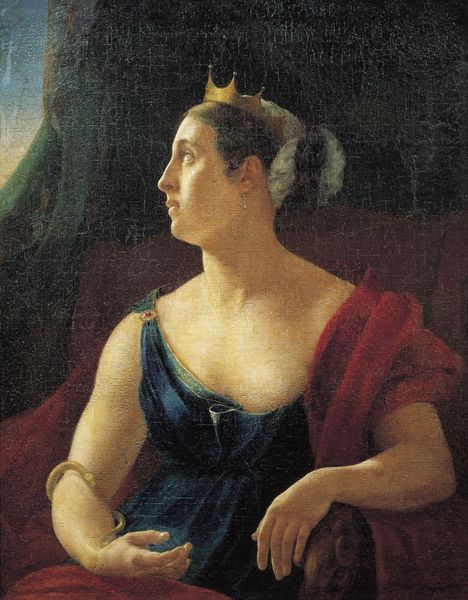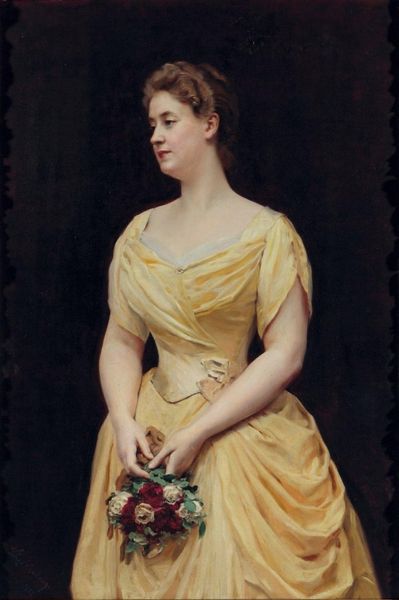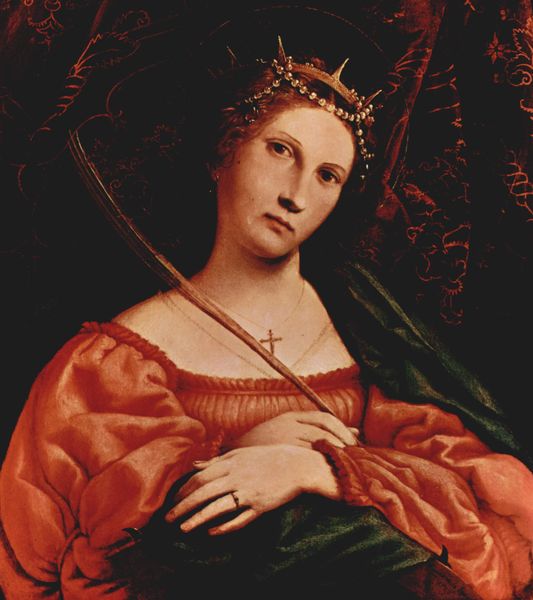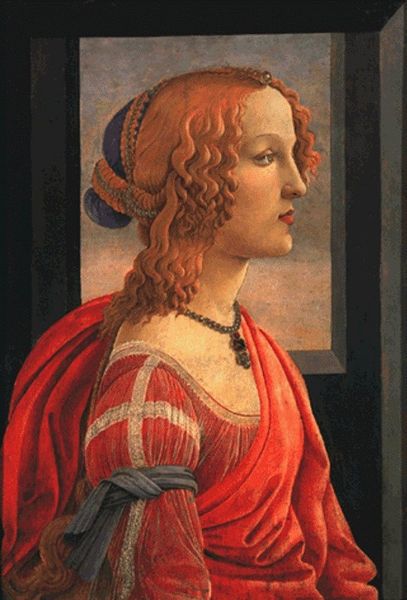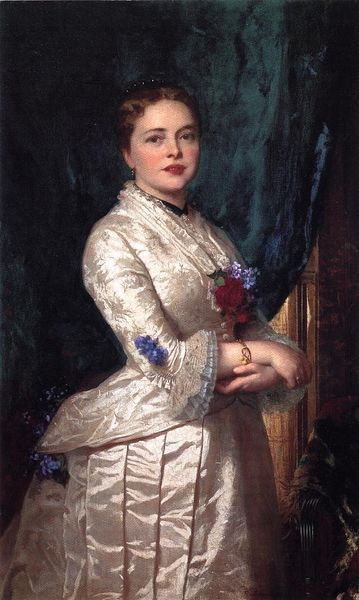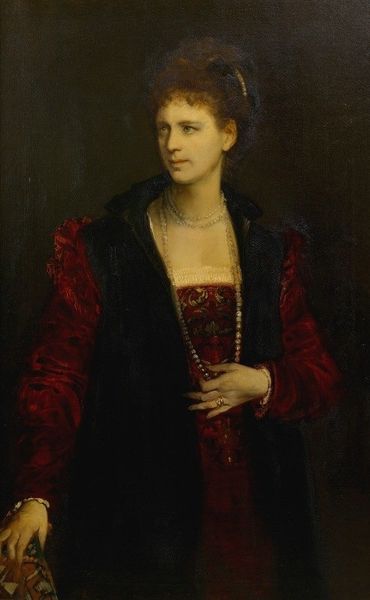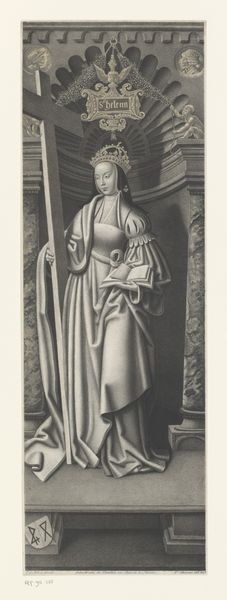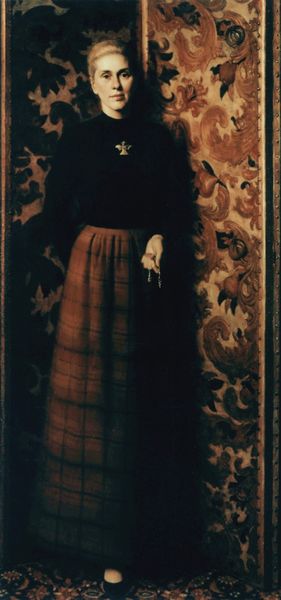
oil-paint
#
portrait
#
oil-paint
#
portrait subject
#
figuration
#
portrait drawing
#
genre-painting
#
facial portrait
#
academic-art
#
lady
#
portrait art
#
fine art portrait
#
realism
Copyright: Gregorio Sciltian,Fair Use
Curator: Here we have a piece titled "Wife Portrait" by Gregorio Sciltian, executed in oil paint. Editor: My first impression is one of formal restraint. The woman’s pose, her slightly averted gaze... it feels very controlled. There's a tension between the shimmer of the fabric and her subdued expression. Curator: Sciltian, though the date of creation is not available to us, positioned himself within the realist tradition. He actively participated in the cultural discourse surrounding portraiture, catering to a specific clientele and reflecting societal values around marriage and status. This isn't simply a likeness; it's a statement. Editor: The fabric of that gown, or perhaps robe, is what gets me. The way the light hits it – it looks almost synthetic, not quite satin, but some sort of modern weave. It’s deliberately luxurious, signaling a certain level of affluence. Curator: Precisely. Consider the historical context, the very act of commissioning such a portrait signifies the sitter’s status. Sciltian understood the social power inherent in portraying his subject in this manner. She is depicted in her finery, indicating her participation in the world of the upper class. Editor: And the materiality reinforces this. I am imagining the process. The layers of paint required to create that depth of colour, that shine… Even her jewellery contributes. It is meticulously rendered—the tiny pearls on her necklace, her elegant bracelet. It speaks to careful craftsmanship and the accessibility of certain materials. Curator: There is a subtle symbolism in play as well, wouldn’t you agree? The book, her hand resting gently upon it, suggesting her intellect and education – but perhaps also subtly her domestic role within that patriarchal setting. Editor: Interesting. To me, it makes me think of leisure, privilege. Who gets to rest their hand upon a book instead of actively working? This painting encapsulates the way class presents itself. Curator: A valid point. It does raise interesting questions regarding class presentation in portraiture. Editor: Looking at the texture of that velvet, though, I wonder how it was made—what dyes they were using at that point in time? It speaks volumes about material processes during Sciltian’s time. Curator: So, it is safe to say that Sciltian created much more than simply a pretty picture. Editor: Exactly. "Wife Portrait" is an object steeped in class, gender, and material processes. Fascinating.
Comments
No comments
Be the first to comment and join the conversation on the ultimate creative platform.

